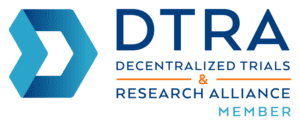Traditionally, the clinical research industry has utilized a top-down model when adopting new technology. In this model, sponsors and contract research organizations (CROs) have been seen as the innovators in the industry by adopting new technology and pushing that technology down to research sites for collection of records and data. Instead of surfing the wave of technology that’s hitting the research industry, research sites have been spectators as the sponsors and CROs have all the fun. This model has been both good and bad for the industry. While some new technology is best implemented from the top-down, this model has created more efficiency for sponsors and CROs than it has for investigator sites, specifically when it comes to electronic regulatory systems. These well-intended systems seem to focus more on what is easiest for sponsors and CROs to receive their records from sites and less on what will be most efficient for investigators to actually collect and maintain those records on-site. The main end-users of this technology, investigator staff, seem to be left out of the equation.
To truly increase efficiency in the clinical research industry, it’s time that the industry opens up more to a bottom-up model of adopting technology. In this approach, research sites are able to compliment certain sponsor/CRO technologies by adopting their own standard electronic systems (e.g., eRegulatory). This approach allows investigator sites to reduce their workload while making records easily accessible by sponsors/CROs. While the top-down approach for adopting technology has helped our industry advance in numerous ways, research sites also desire to be innovators. Most importantly, research sites want to adopt technology that streamlines their own company processes and increases their viability as a business. After all, an efficient and profitable site will produce better quality research data, increase their ability to monitor subject safety, and ensure its ability to thrive and continue to serve the advancement of medicine. When sites adopt site-centric technology and take control of their own company processes, the sponsor, CRO, investigator, study participants, and society as a whole all win in the process.
Electronic regulatory systems from the top-down model typically lack key features that are needed to reduce the workload for research sites. In fact, these systems most likely add additional workload and increase redundant filing since sites still have to file mounds of paper records to maintain a complete investigator site file. Upon further inspection, these top-down systems typically limit the amount of users that a site can have which limits collaboration within the research site. These systems also routinely lack electronic signatures and centralized filing for common records. On top of these issues, sites are being asked to complete lengthy training sessions on multiple systems with several sponsors which leads to a laundry list of usernames and passwords to memorize and a variety of filing processes to follow.
All of these issues, and more, can be resolved with site-centric technology. With our experience implementing RealTime-eDOCS™ with our customers, many sponsors and CROs are already leading the way on this issue by fully engaging with innovative sites that adopt their own regulatory document management system. With the right eRegulatory system, sponsors realize that they gain as much benefit as the research site. Site-centric technology shouldn’t be feared by sponsors or CROs but should be embraced.
At RealTime Software Solutions, LLC we are actively pushing for a bottom-up approach to solve issues that research sites face every day while also improving relationships between sites, sponsors and CROs. The top-down model is very dominant in our industry but RealTime’s affordable solutions are now changing the paradigm and giving research sites the technology they need to regain control of their process and improve the research industry.






